Today, we have a guest post written by one of our Project Conservators, Rebecca Regan.
***
During this project the conservators frequently come across severely crumpled or tightly folded documents within the children’s case files. Sometimes the documents have been squashed in this shape for over a hundred years. They need to be flattened so that they can be read by researchers and archivists. Documents which have to be repaired are also flattened first as this makes the repair process quicker, simpler and more effective.
Many of the documents are very fragile and brittle so this flattening process needs to be done slowly in order to prevent further damage. One of our most commonly used methods is called ‘humidification’. This entails placing the documents in an enclosed container, raising the moisture levels of the air inside the container slightly, in a controlled way, and waiting for the documents to relax sufficiently before unfolding and flattening any distortions.
The opened documents are then allowed to dry out completely while under pressure. Here you can see this being achieved using a traditional nipping press:
The documents in the press are protected from surface damage by being sandwiched between layers of heavyweight blotting paper and a special inert plastic material which prevents the damp documents from sticking to the blotting paper.
This document was found wedged at the bottom of an envelope. It was extremely brittle and hard and impossible to unfold even slightly:
Here is the same document after humidification and pressing.
It turned out to be a foster mother’s note about the child in her care. She describes her as a nice girl who is fond of her foster sister.
This photograph shows what can happen if the humidification process is omitted. At some point in the past, these fragile, brittle documents were forced flat. Unfortunately the resulting severe damage is only too evident.
In contrast, here is a case file, after conservation treatment during this current project, where all the brittle documents were humidified before pressing:
The case file is now stabilised and easy to handle and read. It has become once more a useful and interesting historical resource.

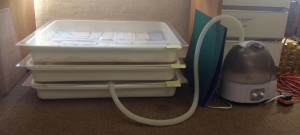

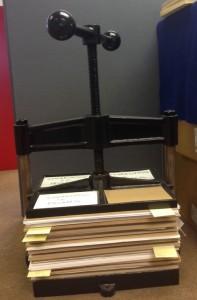
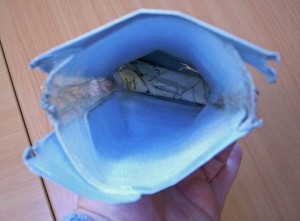
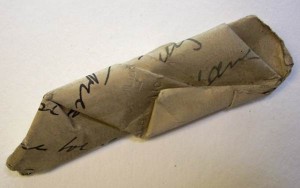
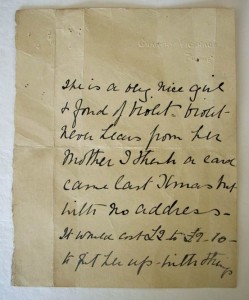
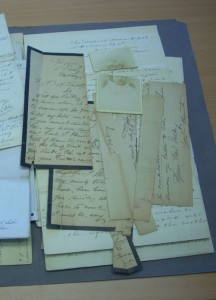
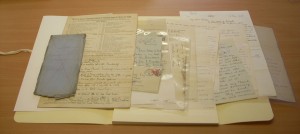
This is an interesting blog post and a very good advert for conservators’ work.
Thanks, Catherine. The Project Conservators have been doing great work. It’s astounding how much more usable the case files are once they’ve been conserved.
Janine